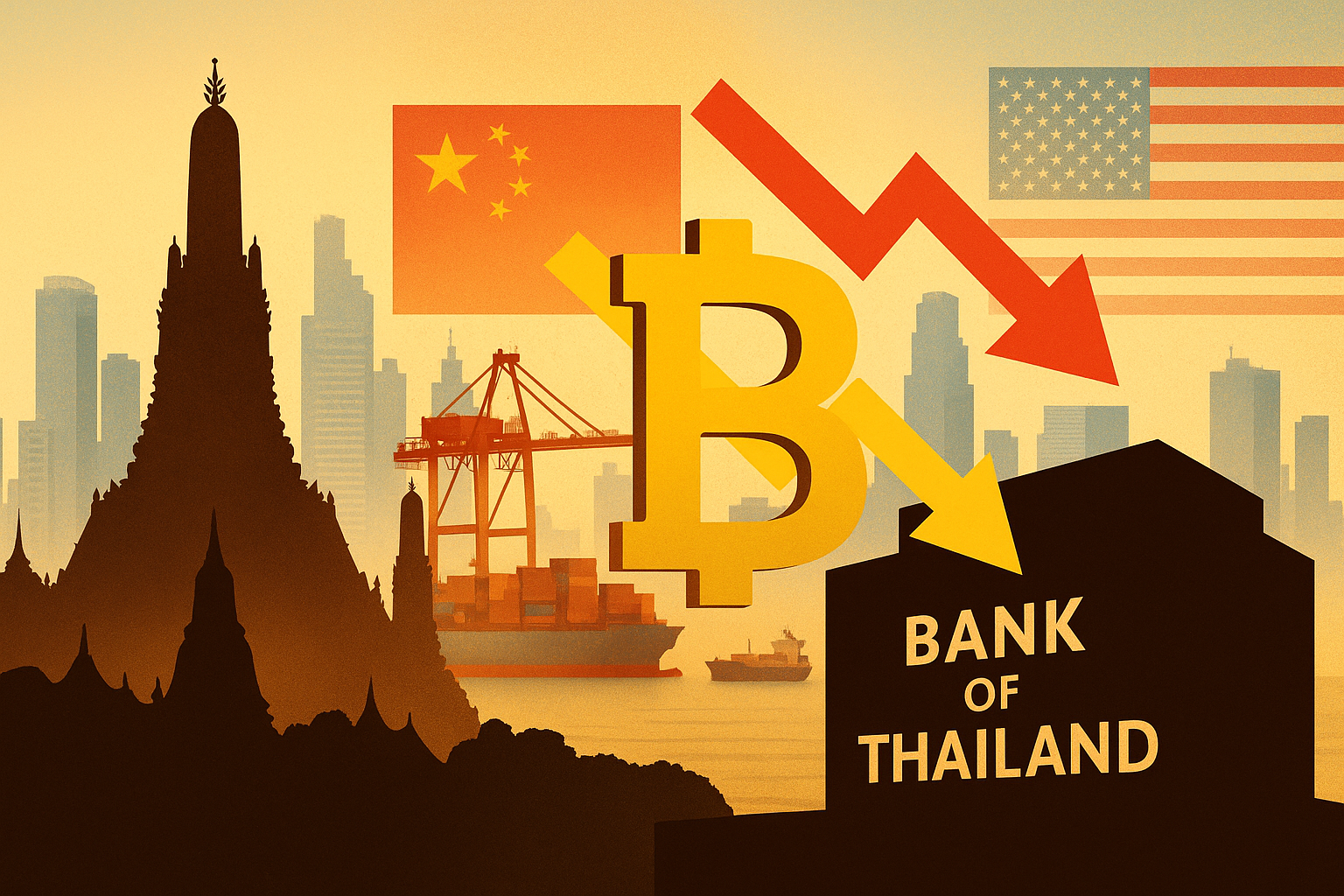US-China Trade Tensions Pose Major Risk to Thailand’s Growth, Says Bank Deputy
By Tredu.com • 10/15/2025
Tredu

Introduction
Thailand’s economic outlook faces a sharp headwind: a flare-up in US-China trade tensions could seriously threaten its growth, warned the Deputy Governor of the Bank of Thailand. Given Thailand’s dependence on both as major trade partners, the fallout from escalating tariffs or export controls may amplify pressures on its export sectors and macro stability.
What the Deputy Governor Said
Deputy Governor Piti Disyatat made his warning at the IMF-World Bank annual meetings, cautioning that recent signals of aggression, such as the U.S. threatening 100% tariffs on Chinese goods in response to China’s expanded rare earth export controls, represent a “big downside risk.”
He noted Thailand’s exposure: when either the U.S. or China ripples disruption through tariffs or countermeasures, Thailand’s trade flows and growth can suffer. He explicitly said there is little room left to ease monetary policy further, pushing reliance onto fiscal, financial, and structural levers instead.
Thailand’s Economic Fragilities
Export-Driven Exposure
Thailand’s economy is heavily reliant on trade, particularly with the U.S. and China. A shock in either direction can cascade to supply chains, demand for Thai exports, and investor confidence.
Weak Growth Trajectory
The country is expected to grow only about 2.2% in 2025 and 1.8% in 2026, both below its longer-term potential of roughly 2.7%.
Monetary Constraints
With its policy rate already at 1.5%, the central bank has very limited capacity to cut further without risking financial imbalances.
Inflation & Exchange Rate Pressure
Thailand has seen negative inflation for six consecutive months, largely due to slumping energy and food prices, which complicates stimulus decisions. Meanwhile, the baht has strengthened by about 5% versus the dollar, which strains competitiveness for exporters.
Channels & Scenarios of Risk
- Tariff retaliation and supply disruption: If the U.S. and China escalate, especially with threats like 100% levies on Chinese goods, supply chain disruptions and cost shocks could bite.
- Reduced demand from major partners: Slower growth in China and the U.S. reduces demand for Thai exports.
- Currency and capital flows: A stronger baht amid risk aversion could hurt exporters, while capital outflows heighten financial stress.
- Limited policy response: With policy room squeezed, Thailand might struggle to counter sudden external shocks.
What to Watch
- Announcements on new U.S. or Chinese trade measures or export controls
- Export data for Thailand, especially to the U.S. and China
- Baht exchange rate movements and capital flows
- Domestic policy responses, whether Thailand expands fiscal stimulus or structural reforms
- Indicators of global growth softness, especially in the U.S. and China
Conclusion
As US-China trade tensions flare up, Thailand’s status as a small, open, export-driven economy exposes it to outsized risk. The Deputy Governor of the Bank of Thailand is clear: the worst-case trajectory could meaningfully derail growth, especially given limited monetary levers and already soft inflation. The core theme: in global storms, export pivots like Thailand must absorb more than their share of shock.

How to Trade Like a Pro
Unlock the secrets of professional trading with our comprehensive guide. Discover proven strategies, risk management techniques, and market insights that will help you navigate the financial markets confidently and successfully.


